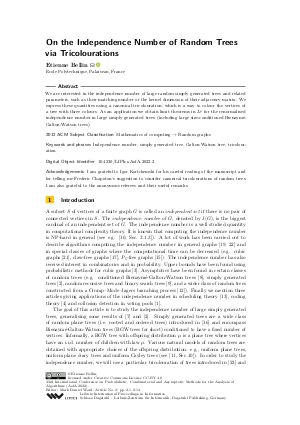LIPIcs.AofA.2022.2.pdf
- Filesize: 0.73 MB
- 14 pages

 Creative Commons Attribution 4.0 International license
Creative Commons Attribution 4.0 International license






















Feedback for Dagstuhl Publishing